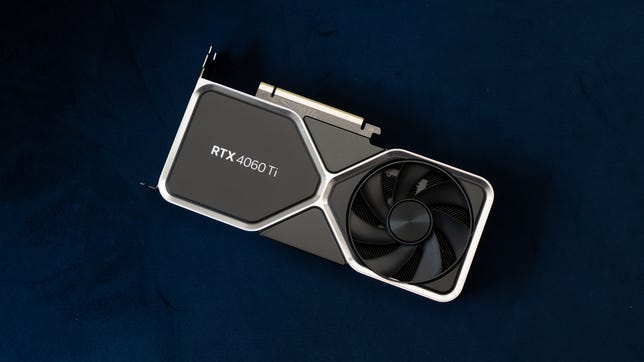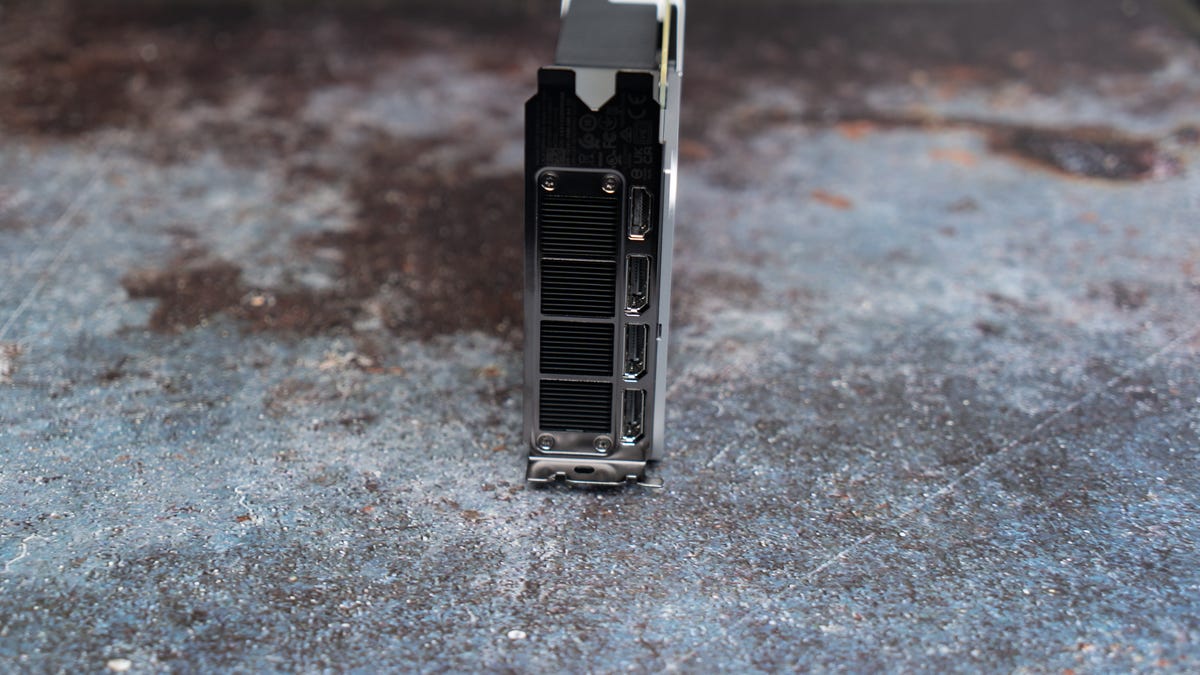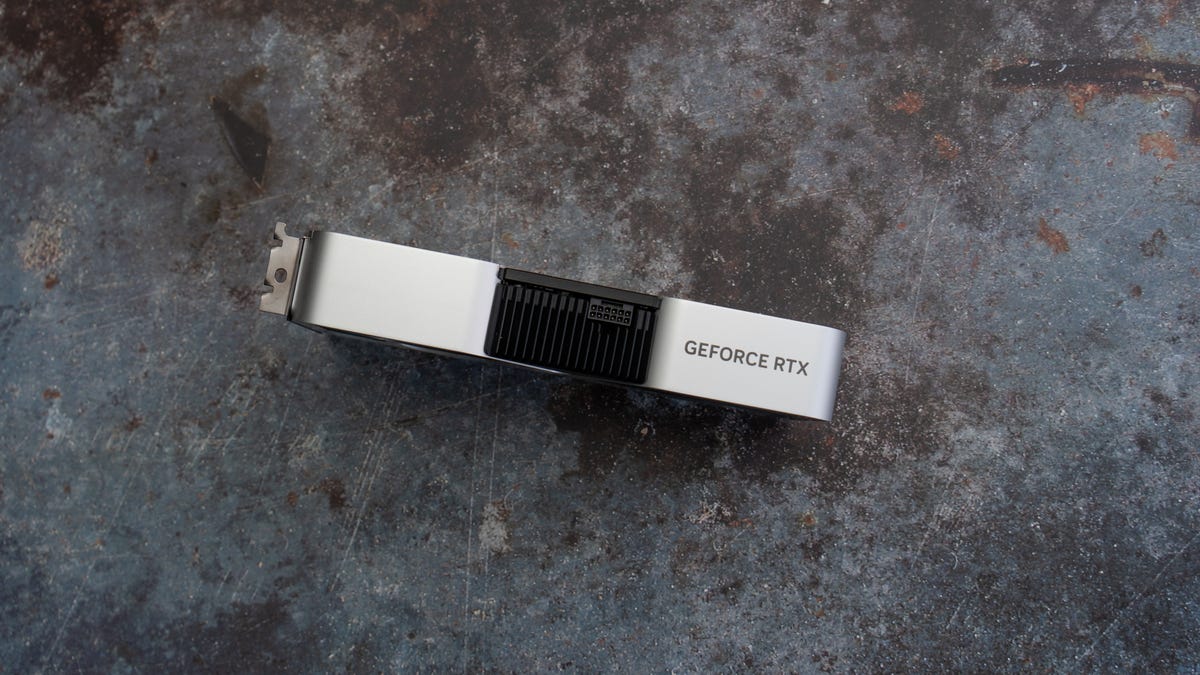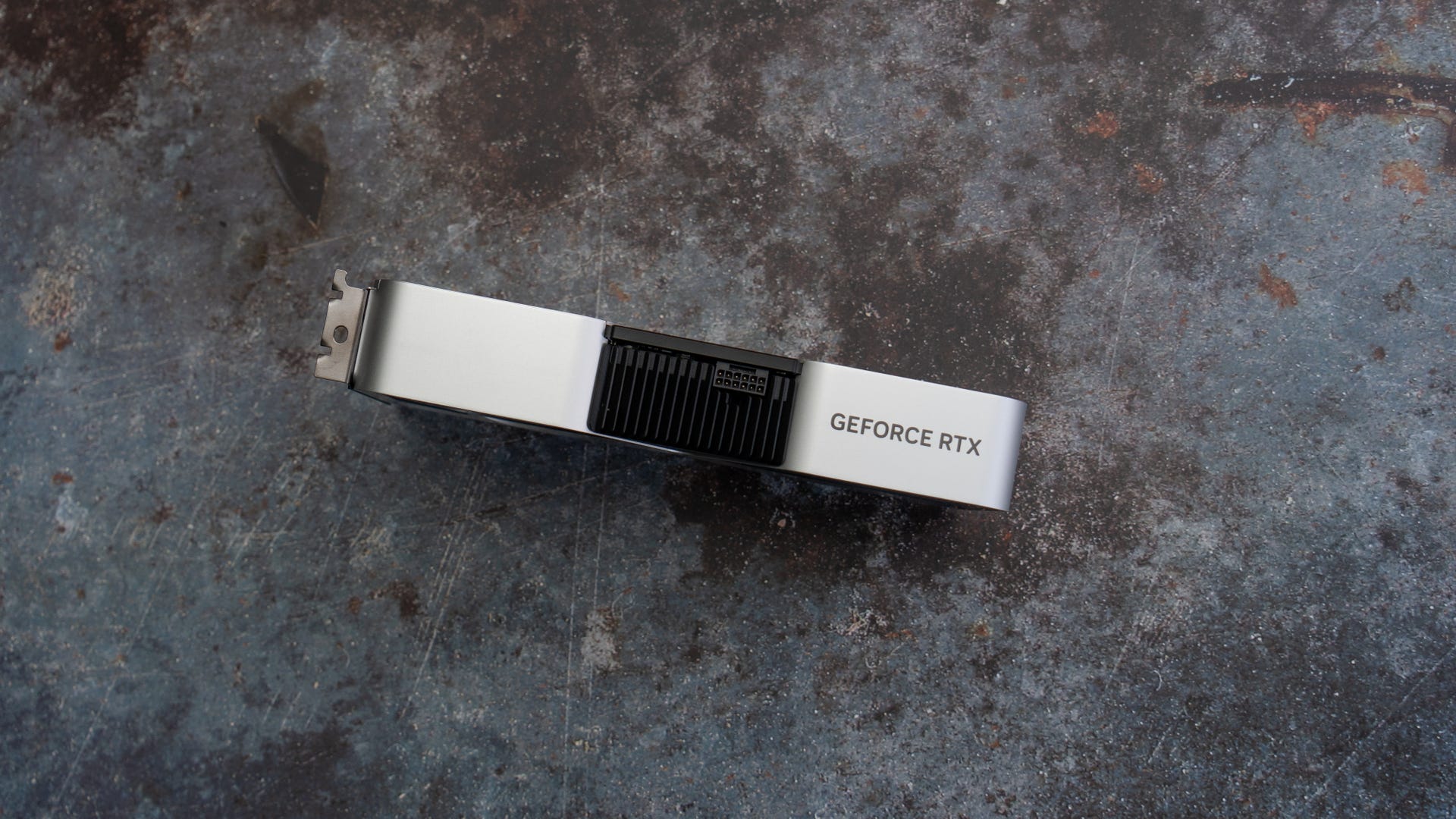The cheaper graphics cards in a given line aren’t the most exciting to discuss — they’re always about what’s been stripped away to make them meet certain price points, size and power requirements — but that’s true for a lot of products that people need to buy rather than just talk about. Nvidia’s latest step-up-from-the-bottom GeForce RTX 4060 Ti falls squarely into that realm. Targeted at high-quality 1080p up to mid-quality 1440p gamers, the 4060 Ti is a solid GPU and smart upgrade from a 20-series or older, but not quite as attractive for using as a budget GPU for video-editing or some other types of creative tasks.
The card is for upgrades, new builds with low-power — a power supply of 600w or less — or compact systems where you can’t fit or support a triple-slot, 11-inch long card. There are two variants of the 4060 Ti, 8GB and 16GB, which start shipping this week. Nvidia will only offer an 8GB version of the Founders Edition cards, which start at $400; $500 and up 16GB models will come from its partners. The new entry level in the 40-series, the RTX 4060, won’t be arriving until July, and will come only through partners.

Nvidia GeForce RTX 4060 Ti Founders Edition (8GB)
Like
- A good size, power draw and slot bandwidth for older systems
- Solid high-quality 1080p gaming and a nice boost for ray tracing over older gear
Don’t like
- Not as well-suited to some creative tasks as it could be
Size is in the eye of the beholder, though: After a parade of 2.5-plus slot, 11-inch-plus cards, my reaction to the 4060 Ti was “Wow it’s small.” My colleague Josh Goldman‘s was “That thing’s huge!” It’s a lot shorter than the Intel Arc A750, for example, a lower-end card that also has dual fans (albeit the Nvidia card has one on each side rather than both on one side and full ventilation on the back) but a lot more venting on the edges.
And the 4060 Ti runs pretty cool. It has the same design as the RTX 4070, with an intake fan on each side vent on the back and connector bracket.
The RTX 4060 Ti has a lower-than-typical bus requirement — it fits in an eight-lane PCI slot instead of the now-more-common 16-lane slot — which, combined with its relatively low maximum board power of 160 watts and true two-slot width, makes it an especially nice fit in smaller and older systems. The RTX 4070 is also a good fit, but requires a slightly higher wattage power supply.
Nvidia GeForce RTX 4060 Ti FE (8GB)
| Memory | 8GB |
|---|---|
| Memory bandwidth (GBps) | 288 |
| Memory clock (GHz) | 9 |
| GPU clock (GHz, base/boost) | 2.31/2.535 |
| Memory data rate/Interface | 18Gbps/128 bits |
| RT cores | 34 |
| CUDA Cores | 4,352 |
| Texture mapping units | 136 |
| Streaming multiprocessors | 34 |
| Tensor cores | 136 |
| Process | 4nm |
| TGP/min PSU (watts) | 160/550 |
| Max thermal (degrees) | 194F/90C |
| Bus | PCIe 4.0×8 |
| Size | 2 slots |
| Launch price | $400 |
| Ship date | May 24, 2023 |
But the tradeoff of going lower power is memory bandwidth. Nvidia spins its narrower memory path (128-bit vs. 192-bit for the RTX 4070) and its concomitant “meh” memory bandwidth by emphasizing “effective” memory bandwidth, where the higher number comes from the increase to 32MB L2 cache, up from 2MB in last-generation 128-bit GPUs — 288GB/sec. actual vs. 554GB/sec. effective, in this case. (Cache is a fast-retrieval location for frequently and recently used data, like game textures and ray trace calculations.)
In theory, that also means that you can get away with less VRAM, since you don’t have to store much of what’s in the cache in the card’s main memory. Hence, 8GB rather than 12GB or more that’s found in competitors. It also means that you’ll need to use the bundled power adapter if you don’t already have PCIe 5 PSU connectors; even though it only uses the same 8 pins as older systems, it still needs to be adapted to Nvidia’s now-standard PCIe 5 12-pin connector.
Though it only needs eight pins for power, it still uses the 12-pin connector, so you may have to use the bundled adapter.
That’s fine for a lot of gaming. But it’s not a great choice for some creative applications, such as video editing, where the cache hits can be less frequent than with games. Creative applications also tend to use system memory a lot more, so that eight-lane bus bandwidth — could become a bottleneck. And because of that, along with the narrower memory data path, simply bumping up to the 16GB version of the card won’t necessarily help. It’s too bad, because that means it’s not an unreservedly recommendable choice as a budget creative GPU.

Like its siblings, the RTX 4060 Ti has three DisplayPort 1.4 connections and one HDMI 2.1.
But the card does deliver on gaming for max-quality 1080p to decent 1440p (where “decent” means roughly 100fps at high quality, which means you have some leeway to increase quality at the expense of frame rate or vice versa). It’s also a good entry if you want to use ray tracing, especially given the surprisingly good performance uplift you get by using DLSS; for instance, in Guardians of the Galaxy in 1440p at maximum quality with ray tracing, even DLSS 2 boosted from 66fps to 114fps on the Balanced setting. (DLSS 3 performs a lot better, but doesn’t have nearly the broad support of DLSS 2.)
Without having tested the forthcoming RTX 4060 or AMD competitor Radeon RX 6750 (an older model which remains in the line), I’m reserving judgment on where the RTX 4060 Ti sits on the price/performance spectrum relative to other available options. But thus far it looks like the Ti makes a solid choice for 1080p gamers hoping for a GPU that can last a few years.
Relative performance of other GPUs
Shadow of the Tomb Raider gaming test (1440p)
3DMark Time Spy graphics test
3DMark Fire Strike Ultra
Guardians of the Galaxy (1440p at maximum quality with ray tracing)
3DMark Speed Way (DX12 Ultimate)
3DMark DXR (DirectX Ray Tracing)
Test PC configuration
| Custom PC | Microsoft Windows 11 Pro (22H2); 3.2GHz Intel Core i9-12900K; 32GB DDR5-4800; 2x Corsair MP600 Pro SSD; Corsair HX1200 80 Plus Platinum PSU, MSI MPG Z690 Force Wi-Fi motherboard, Corsair 4000D Airflow midtower case |
|---|


